How To Get Rid of Spider Mites In Soil – Expert’s Advice
by Lee Safin
Spider mite, sap-sucking arachnids, is a common issue in our houseplants and soil. These tiny insects use our houseplants and soil as their food resources and shelter.
Since they are mainly invisible to naked eyes, it isn’t straightforward to discover them. Besides being inconvenient, they are also extremely harmful to your houseplants and soil. Hence, the more early you get rid of them, the better it is.
How do you treat spider mites in soil? In this post, we will share some practical ways to get rid of spider mites in soil and houseplants for good. Just read on!
Contents
- How to Get Rid Of Spider Mites in Soil?
- How to Get Rid of Spider Mites Naturally
- How to Get Rid of Spider Mites Chemically
- The Prevention of Spider Mites
- What are Spider Mites?
- Spider Mite Lifespan
- Where Do Spider Mites Come From?
- Damages to Houseplants by Spider Mite
- Other Facts About Spider Mites
- Wrapping Up
How to Get Rid Of Spider Mites in Soil?

To get rid of spider mites in soil, you can either go natural process or chemical process. Needless to say, natural methods are best for human beings, plants, and pets. However, if biological functions didn’t work for you, you may use chemicals to eliminate them. But we suggest you use natural processes unless you have no option left.
Table could not be displayed.It is best to take immediate spider mite treatment the moment you discover it. It will prevent them from spreading all the soil and houseplants.
Look carefully at which plants are get affected by the tiny insects and keep them separately from other unaffected plants.
If the spider mates attacked a particular soil area, cover them adequately so that they can hover over other regions.
Here we will share both natural and chemical processes. Let’s move on!
How to Get Rid of Spider Mites Naturally
Here we talked briefly about how to get rid of spider mites naturally. But if you are interested to get the ultimate guide on the natural ways to get rid of spider mites on plants, then check our latest article.
1. Natural Predators
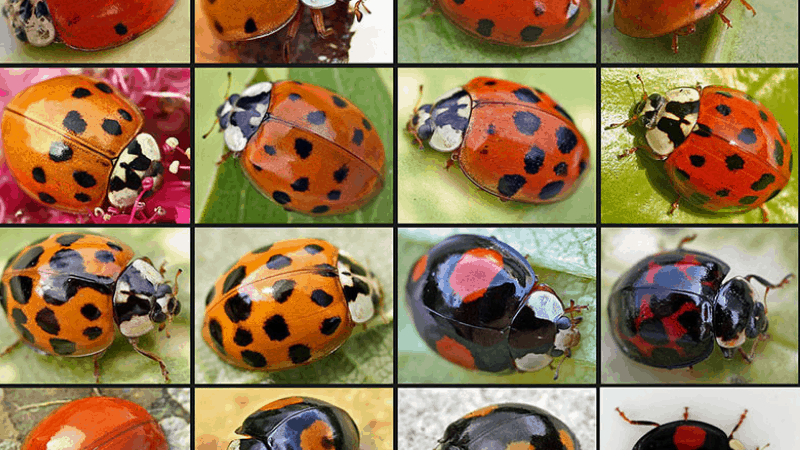
One of the first things you can consider is controlling spider mites biologically.
Sounds odd? Yes, you can do it!
Predatory mites, lacewings, ladybugs, and thrips are effective natural predators that can control spider mites’ growth.
However, you need to make favorable environments for these beneficial insects so that they can hang around. For that, make sure you don’t use pesticides, flower beds, and Mulch flowers excessively.
Besides, predatory mites and insects are also available online and in physical stores. You can use them for indoor plants to keep them on the home plant’s soil after buying them. These predatory insects and mites are 100% safe for most home plants, human beings, and pets.
Read More – Best Insecticide For Indoor Plants.
2. Keep The Soil and Plant Hydrated
Another effective method you can apply is keeping humidity levels high around the plants and soil. Many experts think it is one of the most practical spider mite pest prevention methods.
You already knew that spider mites mainly crawl around in dry environments. When you regularly water your plants and soils, you ensure a hydrated environment.
While being away from your home plants for more than days, use a humidifier to keep them hydrated. Alliteratively, you can also place a water container with a straw near the plants.
If you live in arid conditions, buy a low-priced indoor humidity monitor that will help you track down the soil and plants’ humidity level. So you can water the plant whenever the humidity level decreases.
Apart from that, cut off the heavily infected leaves so that they may cover other areas. If possible, change the potting soil as they can reproduce mites from their eggs.
Read More – How to Increase Humidity for Houseplants?
3. Hot Peppers

Researchers tested several hot peppers to eliminate spider mites, including bell pepper, poblano pepper, serrano pepper, habañero pepper. They have positive results and can kill almost 50% of spider mites.
These were the most unusual answers to your query “how to get rid of spider mites in soil?” Let’s see some genuine answers.
4. Use Neem Oils
Neem oil is another effective solution to deal with a lot of harmful insects and soil fungus, which always eat our plants’ leaves and roots. It is one of the best organic choices, according to many gardeners.
Neem oils contain a toxic (Azadirachtin) component, which acts as a mind disturber for spider mites and other insects. Due to this, most insects forget to eat and do not remember the multiplication activities. It also prevents their eggs from reaching up to the hatching stage, and their colonies die out.
But unfortunately, many of us don’t know how to use it correctly. Due to a lack of information, we don’t get the perfect result.
For the best possible result, we should use neem oils before our plants and soil get affected. You should use them as a preventive measure at least twice a month.
Make sure you use agriculture base neem oil as they are more organic than medically preferred neem oil.
Before using neem oils, water the plants and soil properly, make agriculture base water soluble neem oil. For that, create a mixture by adding 1 liter of tepid water, 1/2 tsp of use agriculture base neem oil, and 1 tsp of insecticidal soap.
Make sure you don’t create an unbalanced proportion to prevent hurting plants and soil. Spray the solution evenly to the affected soil areas and the plant’s leaves.
When should you spray this water-soluble oil?
Many people use it when the sun has already risen, and the temperature is also high. But it is actually the wrong method. Oil also gets warm along with the increasing temperature. And, when we use neem oil during his condition, it starts damaging our plants and soil.
So the late evening or early morning is the right time to use neem oil. It will help the soil and plant to have enough time to absorb it without any harmful effects.
Omri Bliss Pure Cold Pressed Neem Oil
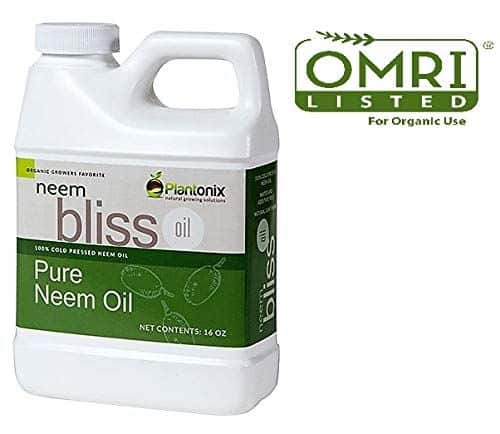
5. Organic Oils
Several studies found that many organic oils work effectively to get rid of spider mites. Among them, rosemary, chamomile, spearmint, and coriander oils are the best. They can kill hundreds of mites’ eggs and fully grown-up mites in a short time.
Organics Rosemary Essential Oil
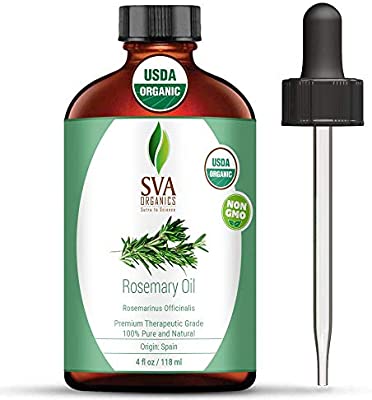
Why Did We Recommend It?
- It’s the best organic oil to kill the bug eggs like spider mites.
- Also, it’s appropriate for soil.
- It’s pet-friendly.
- No after effects have been found.
Here we are mentioning the DIY method you need to follow.
- Fill the container with a proper quantity of water
- Pour few drops of organic oil from the recommended list
- Shake them properly
- Now spray on the soil and plants leaves
6. Use Dish Soap
According to one study by Oregon State University, they found effective results in using dish soap to deal with spider mites. In their test, they used 3-4 tbs and one gallon of water. Then they mixed the formula and sprayed the solution on all the affected leaves and soil areas essentially. It helped them to remove a considerable amount of spider mites.
If you are in India and asking someone “how to get rid of spider mites in soil?”, you will get the following answer. That means in the southern part of Asia using dish soap to kill spider mites of the soil is quite popular.
7. Use Rubbing Alcohol
Rubbing alcohol is another practical solution to get rid of spider mites in soil and leaves. Pour some rubbing alcohol on a fresh cloth or cotton balls and use them to wipe the affected home plants. For soil, spray them by mixing with water moderately. Keep them in this condition for a few hours, and then spray fresh water on the leaves and the soil.
Calyptus Pure Super Concentrated Vinegar

How to Get Rid of Spider Mites Chemically
We have already discussed the most natural effective solutions you can apply to get rid of spider mites in soil and from plants’ leaves. If you still failed to eliminate them, you can follow the below-listed chemical methods.
1. Horticultural Oil or Insecticidal Soap
It is best to avoid using pesticides as they may remove beneficial bacteria from the soil. But the good news is that there are some particular pesticides available in the market to kill only spider mites.
They don’t do any harm to the soil and home plants. Among them, horticultural oil and insecticidal soap are the most effective. You can use one of them to kill spider mites from soil and infected leaves.


Noted: If the outside temperature is very high, it is best not to use horticultural oil and insecticidal soap. Additionally, check the label whether the particular plants are suitable to use this solution. It might be overly sensitive for some plants. These ingredients work best for indoor plants and where the temperature is in favorable condition.
Ortho Insect Mite & Disease
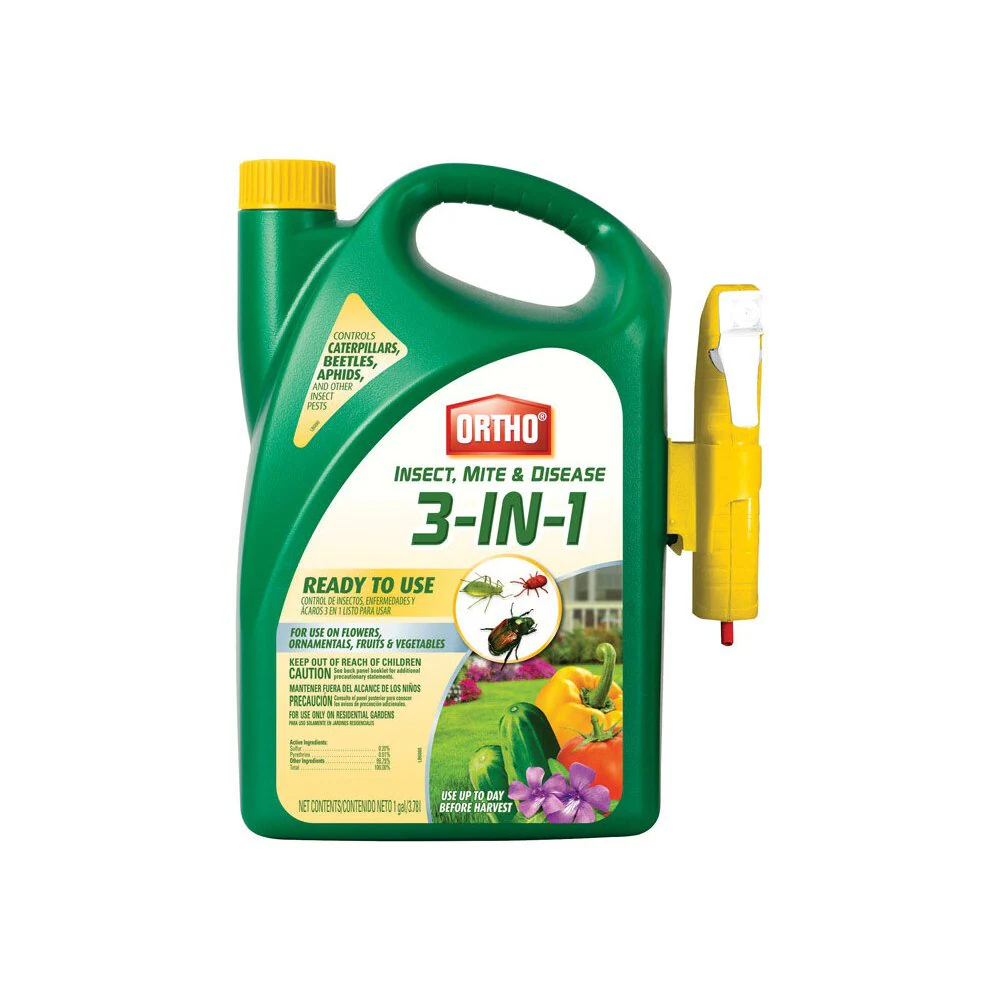
2. Diatomaceous Earth
Diatomaceous earth is known as a bug killer because when bug consumes it, they die. This organic pesticide has very low toxicity for human beings. But it works effectively in dealing with insects and arachnids. Spray the solution on the infected leaves and soil. Apart from removing spider mites, they work impressively well for beetles too.
3. Other Pesticides
Many people think pesticides that contain pyrethroids are good for eliminating spider mites. But they are actually not. Instead, they can give alternative results and help mites for reproduction. Hence, make sure to study appropriately before choosing a pesticide for plant soil.
The Prevention of Spider Mites
Everybody knows the proverb,
“prevention is better than cure.”
Your priority should be on preventing your home plants and plant-soil from the attack of spider mites.
Whenever you bring a new plant to your garden, do a white paper test. It will help you to know the presence of spider mites. Plants that are attacked by spider mites will kill them gradually and make soil unproductive. That’s why you should avoid purchasing plants that have spider mites.
Additionally, try to keep your plants and soil healthy. Healthy soil will ensure better functionality for plants and help plants to grow fast.
To ensure healthy soil, you need to water the soil routinely but not overly. Your plant soil needs to hold a standard amount of water. As spider mites love to crawl over dry, warm places, soil with a high moisture level will prevent their growth.
What are Spider Mites?
Spider mites are the cousin of scorpions and ticks, and they are not insects but particular arachnids. They mainly use indoor plants and pot soil for their accommodation and sources of food. But they live in outside plants and dirt too.
These tiny bugs are as minor as one piece of grain sugar. They have an egg-shaped body structure and eight legs. Though most of them are white, some also show up as black, red, or tan color.
Spider mites are so tiny that you can’t identify them without using a magnifying glass or microscope. You can realize their presence when you see webbing on plants initially. These tiny creatures are mostly seen crawling around your houseplants and nearby soil.
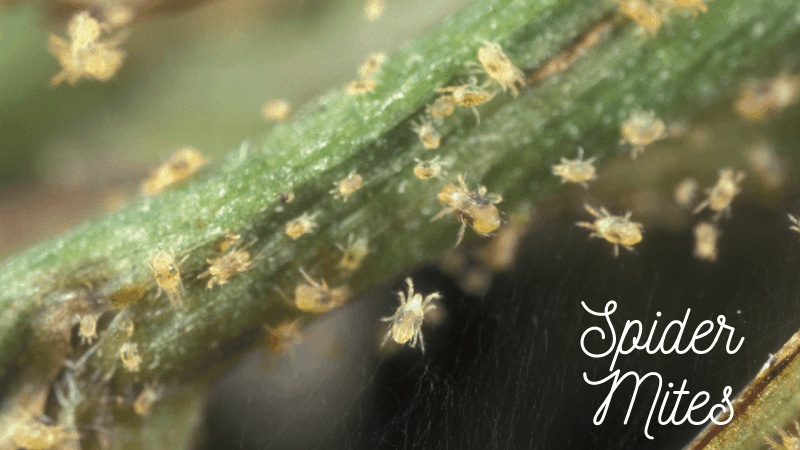
These whiteflies love to live in warm and dry environments. That’s you will find their indoor plants and pot soil during the winter season.
One thing you should not misunderstand is that spider mites may not live on your houseplant soil. Instead, it could be fungus gnats, which damage houseplants and seedlings.
There are different types of spider mites available on earth
- Spruce
- Southern red
- Strawberry, and
- Carmine.
But the two-spotted spider mite is the most common one, which was initially discovered in Europe.
This mite is an occasional pest and has orange-yellow color on the body with a single dark mark on both sides. These bugs can severely damage some plants during hot, dry weather.
Spider Mite Lifespan
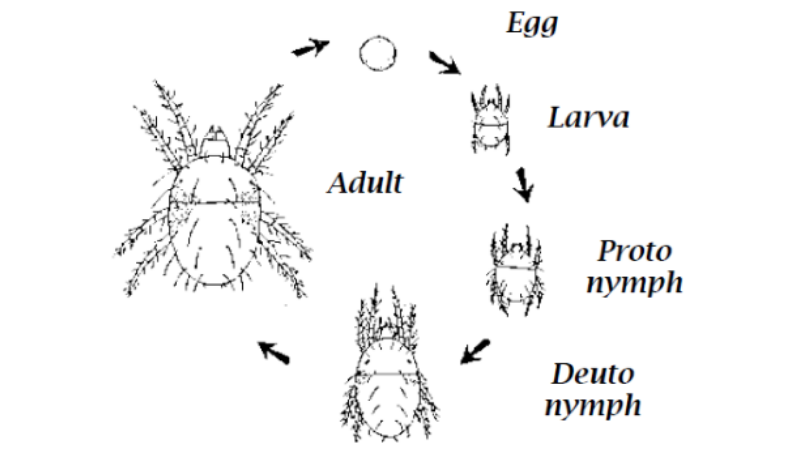
Spider mites merely do any hard for humans, but they are pretty harmful to plant life and soil. These scale insects live around 3-4 weeks on average.
However, their small lifespan doesn’t prevent them from reproducing mites. When they live in a favorable environment, their sexual reproduction boosts. Their population may reach double within a couple of weeks.
A tiny spider gets the breeding power within five days or a maximum of 1 week after birth. Adult females can lay hundreds of eggs within a couple of weeks. Then, the eggs start to hatch within three days and finally come out as mites. Their reproductivity reaches doubles or more within a short period.
It is common not to discover them on naked eyes in soil and plants until their population has exploded. They move from one place to another, inside to outside, and plants to plants based on environmental conditions.
Where Do Spider Mites Come From?
It is hard to discover where spider mites come from. So it isn’t unsurprising to see them at any place. As they are difficult to spot, you can never track their presence until they do some damage to your home plant’s soil or the plant leaves.
However, here are some common varieties of places where you can spot spider mites.
- Purchasing plants from the nursery that have mites
- Mixing new soil to old unsterilized soil
- Shifting plants to the outside environment
- Moving plants to inside from outside
- Coming through windows and doors
Damages to Houseplants by Spider Mite
There are many deadly houseplant pests available in the world, and spider mites are a well-known one. They either attack directly in pot soil or the houseplants. They extract food sources and nutrition from the soil and make it unfertile.
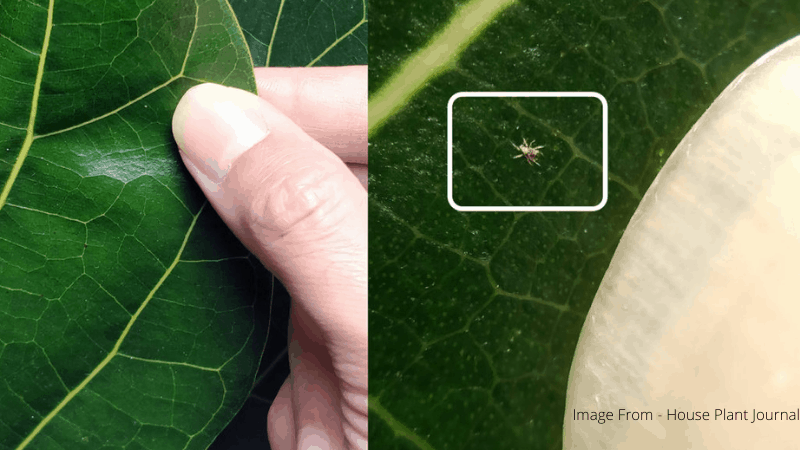
These harmful bugs also attack houseplants and damage heavily or even finish their life within a brief time. Initially, they will make the leaves flecked, discolored, and wizened. After a particular time, the ravaged leaves will fall, and finally, the houseplant will die.
These two-spotted spider mites act more unkindly for indoor plants than outdoors. As a result, you need to take quick action to remove them from soil and plants as early as possible.
Other Facts About Spider Mites
Can spider mites survive in soil?
Spider mites have the appearance of tiny spiders, which mainly eat plants. When the winter season comes, they prefer to rest in the soil. In the summer season, they crawl up in different places and eat throughout the year.
They are super active in dry and hot environments, between 48 °F and 111 °F. Their needle-like mouth bits serve as a food source for spider mites consuming fluid from individual plant cells.
At what temperature do spider mites die?
Spider mites prefer to crawl around warm temperatures, and they have a high tolerance level. It makes it challenging to get over them easily. Whether it is a cold or warm condition, they can cope up with the situation easily.
There is no specific temperature that kills mites. But when you use a natural or chemical solution, temperature and other things come in unfavorable conditions. They find it hard to exit for days and finally die.
How long do spider mites live in soil?
As they can easily cope up with soil temperature, they live through their life cycle. We have already known most adult spider mites can live four weeks on average.
What types of plants do spider mites like?
Spider mites use different types of plants as their source of food. They can be seen on tomatoes, melons, strawberries, and other fruit plants for outdoor plants. They also like many indoor plants such as shrubs and ornamental flowers.
Wrapping Up
Hopefully, you have now gotten a better idea of how to get rid of spider mites in soil and from plants. We have discussed both natural and chemical methods to kill these harmful insects. The earliest you can get rid of them, the better for the soil and plants. In addition, don’t forget to take preventive action in the future. If you still failed to get rid of them, we suggest taking help from a pest control expert. Thanks for reading!
Last update on 2023-01-28 / Affiliate links / Images from Amazon Product Advertising API
 |
 |
 |
 |

About Lee Safin
Lee Safin was born near Sacramento, California on a prune growing farm. His parents were immigrants from Russia who had fled the Bolshevik Revolution. They were determined to give their children a better life than they had known. Education was the key for Lee and his siblings, so they could make their own way in the world. Lee attended five universities, where he studied plant sciences and soil technologies. He also has many years of experience in the U.S. Department of Agriculture as a commercial fertilizer formulator.
Thoughts on "How To Get Rid of Spider Mites In Soil – Expert’s Advice"
 |
 |
 |
 |
Get FREE Gardening Gifts now. Or latest free toolsets from our best collections.
Disable Ad block to get all the secrets. Once done, hit any button below
 |
 |
 |
 |
